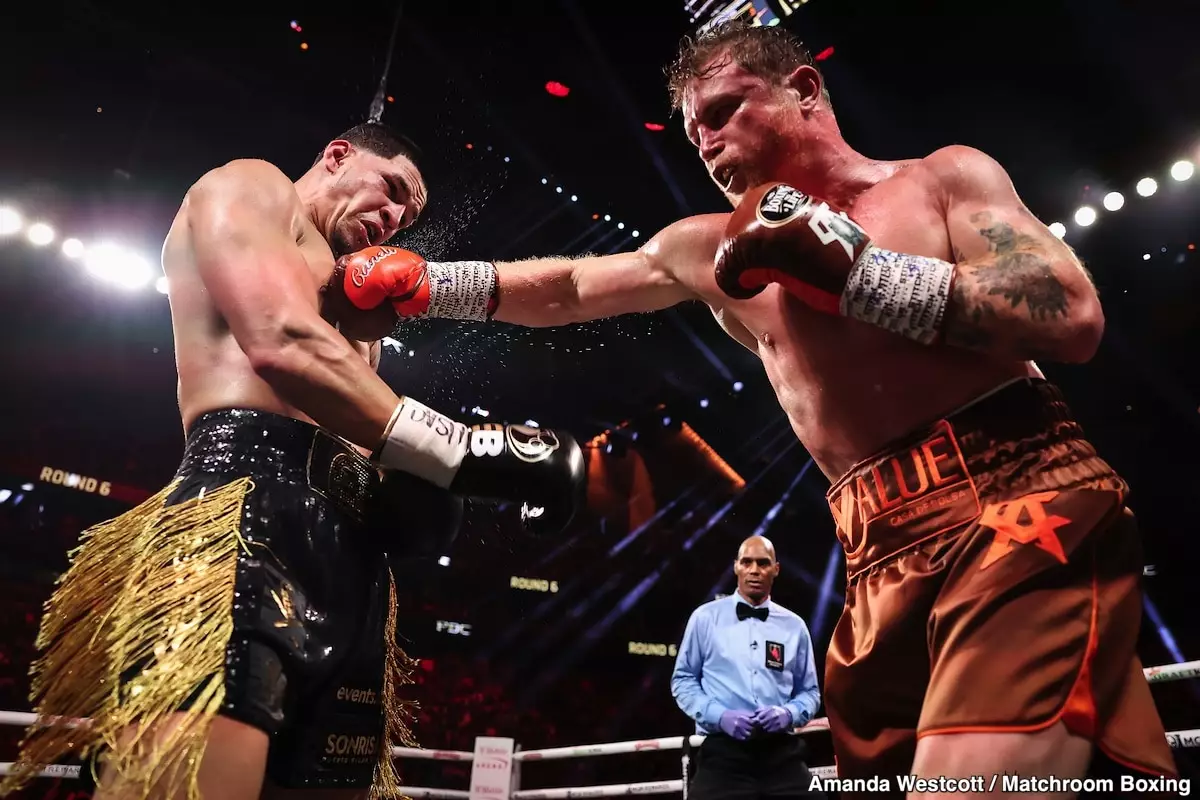In the realm of boxing, where legends are forged and rivalries fuel the sport’s fervor, the ongoing exchanges between Oscar De La Hoya and Canelo Alvarez provide a revealing lens into the current state of the sport. De La Hoya’s recent critiques of Alvarez, particularly in light of his fight against Edgar Berlanga, raise substantial questions about the evolution of boxing strategy, audience expectations, and the overall essence of competition within the ring.
While De La Hoya has been vocal about his disappointment with the event’s turnout at the T-Mobile Arena in Las Vegas, his foresight regarding ticket sales is almost overshadowed by the broader implications of Alvarez’s performance. The absence of a sell-out crowd highlighted a troubling trend in boxing: the waning enthusiasm from fans who expect more than what they witnessed that night. De La Hoya puffed himself up with predictions of empty seats, effectively shaming Alvarez for failing to attract a substantial audience despite his star power. This incident exemplifies how not only are the dynamics of promotion and entertainment shifting, but also how the expectations from fighters have evolved.
A key point in De La Hoya’s critique revolves around the caliber of opponents Canelo Alvarez is choosing. The criticism that Berlanga didn’t belong in the ring with Alvarez may stem from a broader concern regarding the bar being set too low for what constitutes valid competition. The ongoing debate about who Alvarez should face next—named fighters such as David Benavidez or Dmitry Bivol—intensifies the scrutiny of whether Alvarez is willing to challenge himself against genuinely talented opponents rather than those who merely survive to the final bell.
De La Hoya mentions that the focus has shifted to mere endurance rather than striving for an emphatic victory, raising questions about the motivations of fighters today. The lingering concern is whether Alvarez, once a dynamic force within the ring, has adopted a more cautious approach as he inches closer to retirement, potentially prioritizing financial gains over the tradition of boxing warfare. This perspective presents an intriguing juxtaposition to internal motivations; in the past, the desire for glory often drove fighters to take risks that defined their legacies.
Another layer to De La Hoya’s argument is the assertion that Alvarez, at 35 years old, has lost the killer instinct that once defined his years as a world champion. Critics argue that this mentality reflects an impending retirement mindset—one that shies away from risk while seeking a safer, more profitable path. The core issue raised is whether boxing fans should accept this shifting mentality as the new norm. De La Hoya’s nostalgia for a bygone era when fighters aggressively sought knockouts underscores a sentiment lamenting the current state of boxing, where entertainment value appears to have been relegated to a mere hope of fighters surviving through the rounds rather than seeking decisive performances.
This evolution of boxing styles, especially in reference to Alvarez’s performance against Berlanga, raises questions about the techniques and training methodologies currently in vogue. As noted, Alvarez has struggled to secure knockouts since 2021, suggesting a possible decline in offensive aggression likely influenced by his methodology in the ring. By focusing on single, power shots instead of combinations, he has triggered doubts about his capacity to revert to a style viewed favorably by many purists of the sport. It beckons the question: is he fighting for the fans or merely to extend his career in the ring as long as possible?
As De La Hoya continues to ambush Alvarez with critiques, it beckons an existential question regarding the future of the sport. Are fans, and even fighters themselves, becoming conditioned to accept mediocrity in competition? A serene acceptance of the status quo could ultimately stifle the sport’s vitality. De La Hoya’s insistence on showcasing the best against the best resonates deeply in a landscape starved for authenticity and compelling competition.
For boxing to thrive, aligning its legacy with fighters’ motivations is critically important. The sport should not succumb to a stagnant routine where the thrill of victory is replaced by lengthy bouts devoid of excitement. Instead, it must embrace champions who approach every fight with the kind of ferocity and ambition that fans expect. The call for fighters—especially someone of Alvarez’s reputation—to embrace ambition is one that will resonate with boxing aficionados for years to come.
In conclusions, both De La Hoya’s critiques and Alvarez’s performances serve as reminders of the elements that make boxing an enchanting sport—demanding not just skill, but heart, ambition, and the eternal pursuit of greatness.

